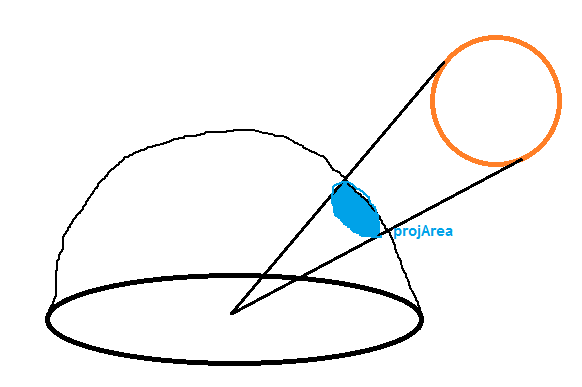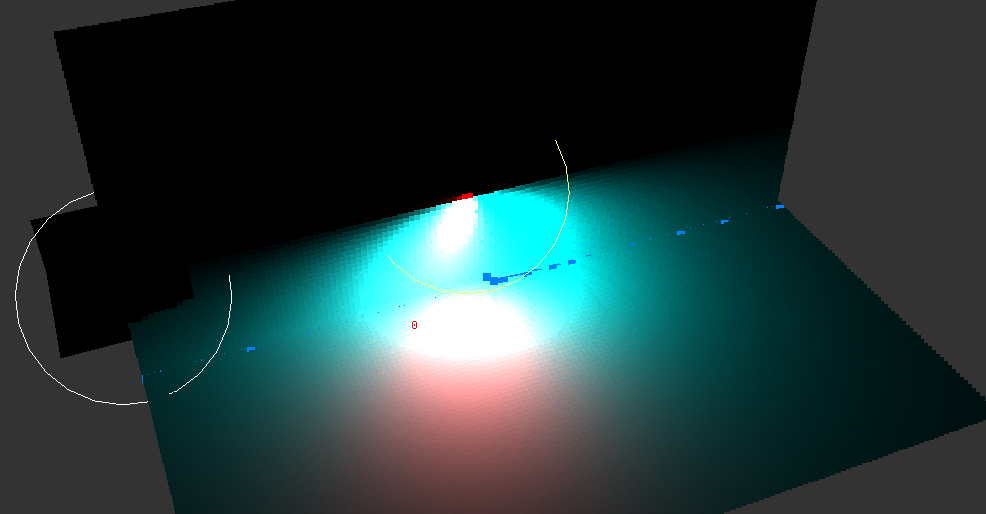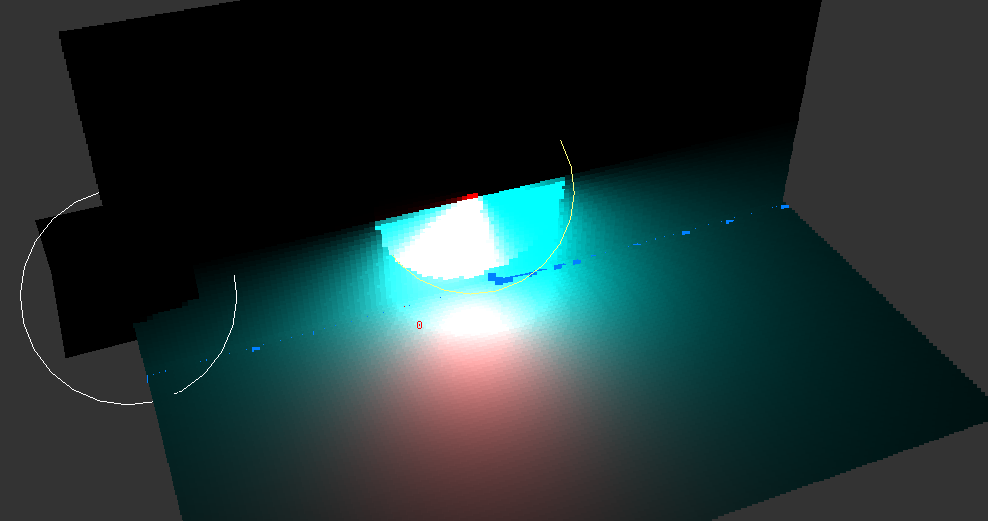In Newtonian gravity, the isotropic emitter ensures that space is curved. This is not quite the same as what happens in general relativity. In general relativity, time is also curved. One way to try to model the curvature of time is to produce graviton overlap by using pseudorandom direction vectors. Preliminary results show that up close, gravitation becomes stronger than that predicted by Newtonian gravitation alone.
Here $$M$$ is the emitter mass.
It is important to note that the gravitational time dilation is like
$$\frac{d\tau}{dt} = \sqrt{1 - \frac{2GM}{c^2 R}},$$
and that Einstein's partial derivative of gravitational time dilation with respect to distance $$R$$ is
$$\frac{\partial}{\partial R} \left(\sqrt{1 - \frac{2GM}{c^2 R}} \right) = \frac{GM}{c^2 R^2 \sqrt{1 - \frac{2GM}{c^2 R}}}.$$
Here we obtain Newton's partial derivative, which is numerically and dimensionally correct:
$$\frac{\partial}{\partial R} \left( c^2 \sqrt{1 - \frac{2GM}{c^2 R}} \right) = \frac{GM}{R^2 \sqrt{1 - \frac{2GM}{c^2 R}}}.$$
We see that for very large distances $$R \gg (2GM/c^2)$$ that Newton's partial derivative provides Newtonian gravitation, as desired.
These matters will be the focus of a future tutorial.










